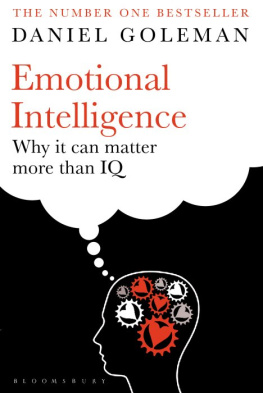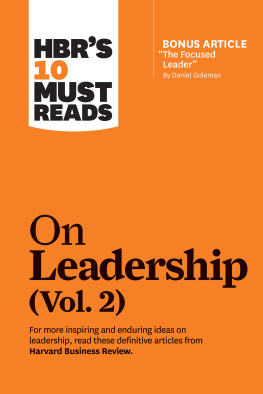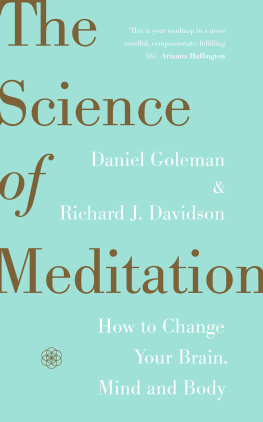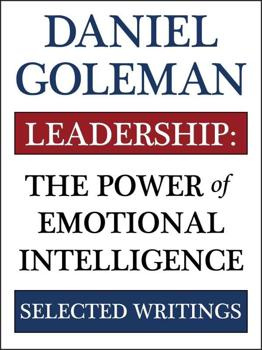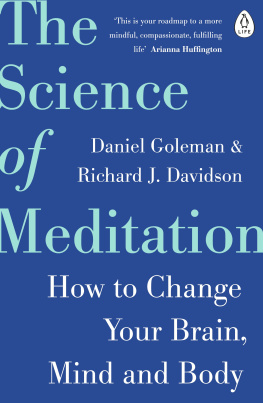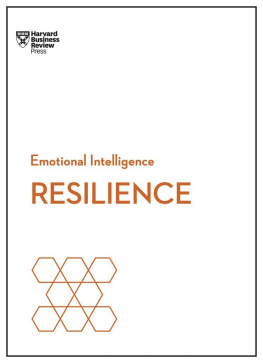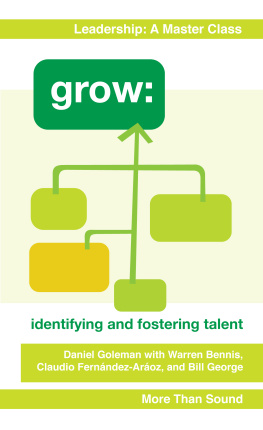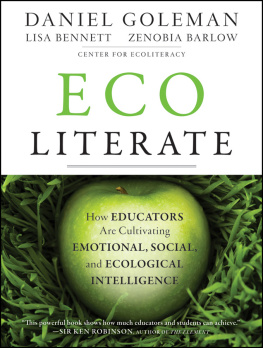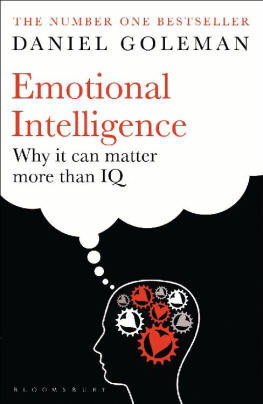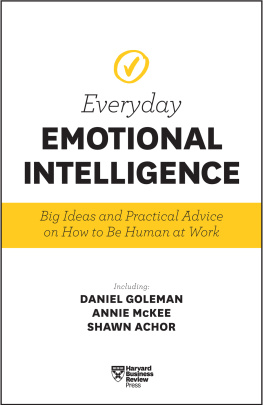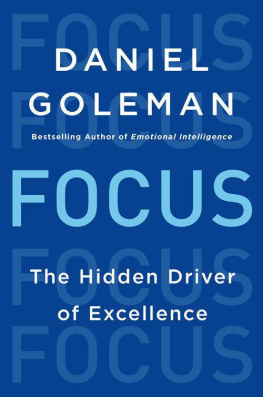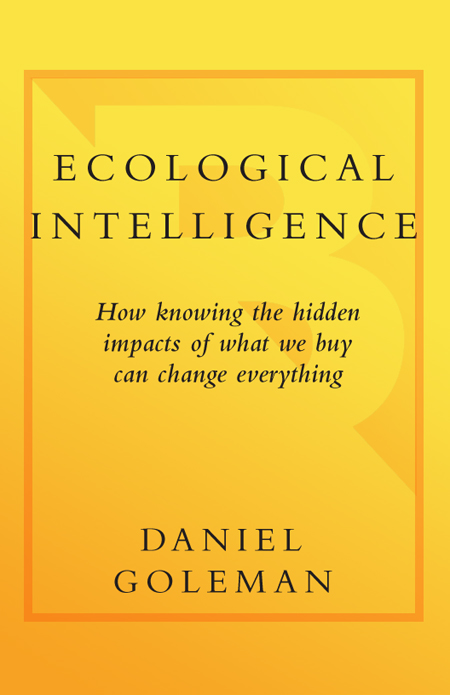ALSO BY DANIEL GOLEMAN
Social Intelligence
Primal Leadership
Working with Emotional Intelligence
Emotional Intelligence
For all the grandchildren,
And their grandchildren's grandchildren
CONTENTS
1

THE HIDDEN PRICE OF WHAT WE BUY
A while ago I made an impulse buy: a small, bright yellow wooden racing car, with a green ball for the driver's head and four black discs pasted on its sides for wheels. The toy cost just 99 cents. I bought it for my eighteen-month-old grandson, who I thought would love it.
After I came home with that little wooden racer, I happened to read that because lead in paint makes colors (particularly yellow and red) look brighter and last longerand costs less than alternativescheaper toys are more likely to contain it. Then I came across a news item reporting that a test of twelve hundred toys taken from the shelves of storesincluding the chain where I bought that car revealed a large percentage contained various levels of lead.
I have no idea if the sparkling yellow paint on this toy car harbors lead or notbut I am dead certain that once it was in the hands of my grandson his mouth would be the first place it would go. Now, months later, that toy car still sits atop my desk; I never gave it to my grandson.
Our world of material abundance comes with a hidden price tag. We cannot see the extent to which the things we buy and use daily have other kinds of coststheir toll on the planet, on consumer health, and on the people whose labor provides us our comforts and necessities. We go through our daily life awash in a sea of things we buy, use, and throw away, waste, or save. Each of those things has its own history and its own future, backstories and endings largely hidden from our eyes, a web of impacts left along the way from the initial extraction or concoction of its ingredients, during its manufacture and transport, through the subtle consequences of its use in our homes and workplaces, to the day we dispose of it. And yet these unseen impacts of all that stuff may be their most important aspect.
Our manufacturing technologies and the chemistry they deploy were largely chosen in a more innocent time, one when shoppers and industrial engineers alike had the luxury of paying little or no attention to the adverse impacts of what was made. Instead they were understandably pleased by the benefits: electricity generated by burning coal, with enough to last for centuries; cheap and malleable plastics made from a seemingly endless sea of petroleum; a treasure chest of synthetic chemical compounds; cheap lead powder to add luster and life to paints. They were oblivious to the costs of these well-meaning choices to our planet and its people.
Though the composition and impacts of things we buy and use daily are for the most part the outcome of decisions made long ago, they still determine daily practice in manufacturing design and industrial chemistryand end up in our homes, schools, hospitals, and workplaces. The material legacy left to us by the once wonder-inducing inventions of the industrial age that ran through the twentieth century has made life immeasurably more convenient than the life our great-grandparents knew. Ingenious combinations of molecules, never before seen in nature, concoct a stream of everyday miracles. As utilized in yesterday's business environment, today's industrial chemicals and processes made utter sense, but all too many make little sense going forward. Consumers and businesses alike can no longer afford to leave invisible decisions about those chemicals and processesand their ecological consequencesunexamined.
In my past work I've explored what it means to be intelligent about our emotions and, more recently, about our social lives. Here I look into the sense in which we can, together, become more intelligent about the ecological impacts of how we live and how ecological intelligence, combined with marketplace transparency, can create a mechanism for positive change.
In the interest of full disclosure, when it comes to ecological intelligence I am as clueless as most of us. But in researching and writing this book I've been fortunate enough to stumble upon a virtual network of peopleexecutives and scientists alikewho excel in one or another subset of the skills we urgently need to build the human store of shared ecological intelligence, and to let that knowledge guide our decisions in better directions. In sketching the possibilities of this vision I've drawn on my background as a psychologist and science journalist to delve into the world of commerce and manufacturing, and to explore cutting-edge ideas in fields like neuroeconomics and information science, and particularly an emerging discipline, industrial ecology.
This journey continues one I began more than two decades ago, when I wrote in a book on self-deception that our habits of consumption on a worldwide scale are creating an ecological deficit at a rate unparalleled in history, as I put it, simply by our heedlessness of the links between the decisions we make daily for instance to buy this item rather than thatand the toll those decisions have.
Back then I imagined that one day we would somehow be able to gauge with accuracy the ecological damage from a given act of manufacturing or the packaging, shipping, and disposal of a given product and sum it up in some handy unit. Knowing that metric about a TV set or box of aluminum foil, I reasoned, we could take more responsibility for the impact on the planet of our individual choices. But I ran out of steam, conceding there is no such information available, and even the most ecologically concerned among us do not really know the net effect on the planet of how we live. And so our obliviousness lets us slip into a grand self-deception that the small and large decisions in our material lives are of no great consequence.
All those years ago I had never heard of industrial ecology, the discipline that routinely does the very impact analyses I dreamed of. Industrial ecology exists at the cusp where chemistry, physics, and engineering meet ecology, and integrates those fields to quantify the impacts on nature of manmade things. Back when I was wishing for this field to exist, that still-obscure discipline was just gathering itself. In the 1990s a working group of the National Academy of Engineering spawned the field, and the very first issue of the Journal of Industrial Ecology appeared in 1997, well over a decade after I had wished for its existence.
Industrial ecology had its roots in the insight that industrial systems parallel natural ones in many ways: the streams of manufactured stuff running between companies, extracted from the earth and emitted in new combinations, can be measured in terms of inputs and outputs regulated by a metabolism of sorts. In this sense industry, too, can be seen as a kind of ecosystem, one that has profound effects on every other ecological system. The field includes topics as diverse as estimating CO2 emissions from every industrial process or analyzing the global flow of phosphorus, to how electronic tagging might streamline the recycling of garbage and the ecological consequences of a boom in fancy bathrooms in Denmark.


